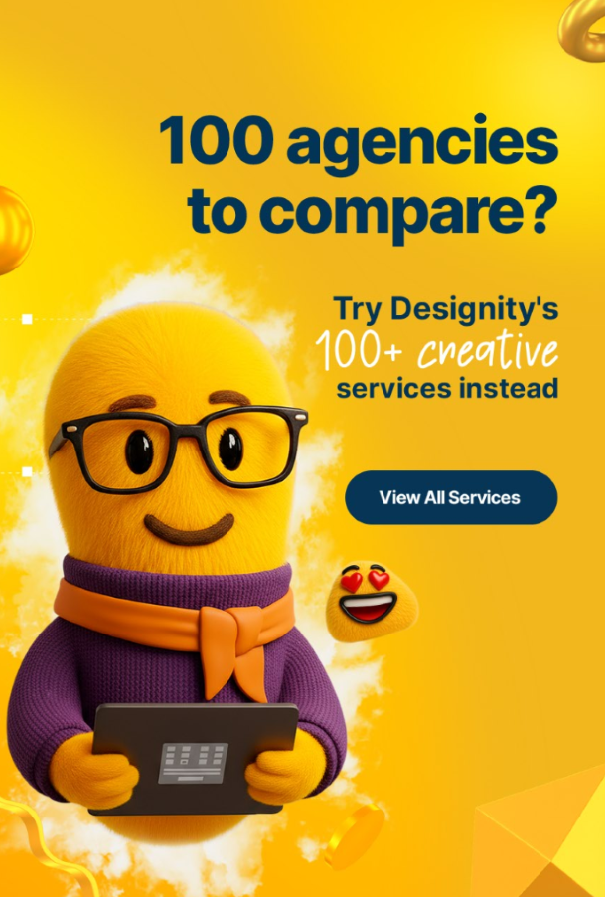Why Your Market Development Strategy is Crucial to Your Success
If you’re getting ready to make the leap toward a brand-new customer base or unveil an awesome new product to an equally awesome new audience, then you’ve undoubtedly wondered about what strategy you’re going to have to implement to make your new venture a success.
This is where a good market development strategy comes into play. But ... what is that? And why is it so crucial for your venture's success?
Because, typically, brands implement a market development strategy when selling existing products or services to new markets, regions, or demographics, or when developing a new product for a new audience.
Done right, this strategy gives your brand a competitive advantage by identifying and targeting previously untapped opportunities, which allows you to grow your customer base, amplify your brand awareness, support long-term growth, increase sales, and, by doing all of that, increase revenue too.
So, how do you do it?
The tiny details are up to you and your brand, but we’re going to give you a roadmap of the basics to get you started on your journey!
Today’s blog is going to take you through the key components that make up a successful market development strategy and equip you with the best insight and tips we can to help you navigate all of the intricacies that come with expanding your business!
What’s The Difference Between Marketing Strategy and Marketing Development Strategy?

These two phrases may sound like they refer to the same ideas and processes, but, trust us, they do not!
A marketing strategy is a comprehensive plan that outlines a brand’s approach to meeting marketing goals. It involves activities like audience targeting, product positioning and differentiating, pricing, promoting, and choosing the right distribution channels.
Market development strategy, on the other hand, is a specific segment within your overall marketing strategy.
Its primary focus is to expand a company’s reach by identifying and entering new markets or customer segments. As we touched on above, this involves different activities, like identifying new areas for geographic expansion or untapped customer groups to sell its products and services to.
Key Components of a Marketing Development Strategy
Before diving into the development of your new strategy, let’s explore the steps you’ll have to take to make sure that your campaign is successful.
First off, you’ll start with …
Market Research
Market research is perhaps the most critical step in your marketing development strategy.
You’ll need to know what you’re working with by collecting, analyzing, and interpreting data about your target customers, including their pain points, their preferences, and their behaviors.
You’ll also want to research current market trends to find growth opportunities for your brand to capitalize on. This data can be collected in a variety of different ways but here are some of our favorites:
- Customer surveys — Gather information directly from your target audience by asking them questions, either through structured surveys or questionnaires. This can help you better understand their preferences, needs, and opinions, as well as let you know if there’s something you can change to better suit them.
- Focus groups — Small group discussions with individuals who represent your target audience allow you an opportunity for a more in-depth conversation and deeper insights into their perspectives and experiences with your brand.
- Competitor analysis — Study and evaluate the strategies and performance of any direct competitors you have in this new market segment you’re trying to reach. This can help you identify your strengths, weaknesses, and any potential opportunities to differentiate your brand.
- Data analytics — Use your preferred tools and methods to collect and analyze data from various sources (website or social media analytics, sales data, ad campaign metrics, third-party data, etc.) to gain valuable insight into your customer’s behavior, trends, and patterns.
Target Audience Identification
The next step is deciding how you’ll tailor your new marketing efforts. For this to be accurate, you’ll need to thoroughly understand who your ideal customers are.
That's why we find it best to build out some user personas.
A user, or customer, persona is a fictional representation of your ideal customer and includes important personal details about them like age, gender, occupation, goals, and challenges.
Creating these personas helps you better connect with and understand your ideal audience and their pain points, which in turn helps you decide how to present content and messaging that best meets their needs.
And it’s not a one-and-done, either! Once your campaign has launched, be sure to periodically revisit your user personas and refine them as your business and audience evolve so that your brand is always aligned with your customer's needs!
Competitive Analysis
Just like you’re trying to better understand your target audience, it’s also crucial that you understand your competition as well and better know who else is targeting your ideal customers.
So, analyze your competition.
Monitor their social media, check out their website, their customer reviews, their content, their pricing, their marketing strategies, everything you can think of.
What are their strengths? Weaknesses? Strategies? What’s working for them that could also be working for your brand? What’s not working that you could do better Knowing this can help inspire your strategy, as well as help you identify any gaps and opportunities in the market for your brand to fill.
Once you know who you’re up against, identify your unique selling points.
What sets your brand apart? What are you doing better than your competitors that you can highlight? Knowing this can help you with your messaging, pain points, and creating value propositions for your brand.
Setting Clear Goals
Setting clear and well-defined goals is essential to guide your market development strategy.
Goals not only provide direction and give you a way to measure key milestones and overall success, but they also motivate your team to succeed!
Consider setting some SMART goals to make sure that what you’re aiming for isn’t too abstract or hard to measure. If you’ve never heard of SMART goals before, they work like this.
- Specific — Keep your goals clear, concise, and focused on a particular thing you want to improve or accomplish. (Example: Expand to two new geographic regions in the next fiscal year.)
- Measurable — Your goals should include measurable criteria for success so that you’re better able to track your progress and determine when you’ve met your goals. (Example: Increase sales revenue by 15% in those newly acquired regions.)
- Attainable — Be sure your goals are realistic and attainable with your resources and budget. Push yourself, yes, but keep your goals realistic. (Example: Expand product marketing efforts for the new product line by hiring two additional specialists.)
- Relevant — The goals you choose should align with your brand’s overall objectives. They should matter and contribute to your success. (Example: Expanding to two new regions is relevant because it grows your business)
- Time-bound — Give your goals a specific time frame to complete. This gives you something to work toward and keeps you from dragging your feet. (Example: Achieve all of these results in the next 18 months.)
Creating Your Marketing Development Roadmap

Now that you’ve analyzed your market data, determined who your target audience is, and set goals to work toward, it’s time to create a marketing plan.
Use the following steps to give your marketing campaign its best chance at success:
Choose the Right Marketing Channels
The distribution channels you use can make or break your campaign before it even starts so choose wisely! You’ll want to refer to your user personas to know where best to meet your new potential customers in meaningful ways.
Where your customers hang out depends on your industry and the products and services you offer, but here are some popular channels where you can find them.
Digital channels
- Websites
- eBooks
- Social media platforms
- Email marketing
- Digital ads or displays
- Mobile marketing
Traditional channels
- Print (brochures, print ads, magazines)
- Billboards
- TV commercials
- Radio commercials
- Direct mail
Use a combination of both to put your brand in front of the right eyes at the right time and in the right way.
Develop a Content Strategy
Content will play a huge role in the success of your market development strategy. The right content can engage your audience, establish your brand’s authority, and persuade your customers to action.
It’s vitally important for your content to hit its mark, so consult your user personas to determine the right type of creative content to use with your audience. You’re looking for written, visual, and interactive content created in a style that resonates with those you’re selling to, hits their pain points, and, whether it’s meant to inform, educate, or entertain, provides some kind of value.
Your content also needs to be consistent in both scheduling and branding.
Find the right balance without being overwhelming and then create a content calendar and stick to it.
Budget and Allocate Resources
Once you know what you’re working toward and what kind of content you’ll need to do it, you’ll need to set aside a budget to put the plan into action.
This budget will include any materials you need, such as printed marketing collateral, billboard leasing, OOH ad costs, manpower (including additional salaries if you’ll have to bring on extra team members!), equipment, and any necessary software.
Decide on your budget, divvy up responsibilities amongst your team, and allocate the necessary funds to execute your strategy most effectively.
Implementation and Execution

Here is our favorite part of the process!
Once your marketing plan is crafted, it’s time to turn the plan into action! Here is how to execute your strategy in the most effective way.
Launch
It’s go time, baby!
Before launch, be sure your team is completely aligned on your strategy and plan!
Whatever your first step happens to be, launch your campaign as scheduled and get your brand out there.
Be sure to keep track of how things are going in the first few weeks. How is your campaign performing? Is your content engaging your audience? Is your budget enough? Do you need more manpower?
Start collecting data as early as possible to quickly make any changes as you go.
Measuring and Adapting
Once your strategy is in full swing, be sure you’re keeping a watchful eye on your metrics.
Track your progress and results to see how effective your strategies are. Is something not working? Working very well?
Identify and define relevant KPIs and make adjustments as needed to keep your campaign fresh and relevant.
Market Development Strategy Tips
Creating an effective marketing strategy isn’t easy! Here are some tips and tricks to give it the best chance possible at success!
- Communicate with your team and be sure that everyone understands both their goals and their own responsibilities.
- Have regular check-ins to answer questions and make sure everyone’s efforts are aligned.
- Document. Take notes on key details. This will help you down the line while you are measuring your results and can give you a point of reference if you have to revisit a part of your plan. This is also useful for presenting to important stakeholders and partners.
- Invest in the best tools and software. You want the most accurate data analytics you can get to keep track of KPIs and measure your growth. The right software can also make communication easier, increase your efficiency, and save time and money.
- Go with the flow. Customer trends and industries change often. It’s important to be flexible and adjust as you go.
- Integrate customer feedback in the form of surveys and reviews. Gather insights from your audience and use them to refine your approach and give your audience what they’re looking for.
- Experiment and innovate! Be open to trying something new and exploring different approaches! This can give your marketing team a chance to shine and uncover fresh opportunities for better results!
<div class="c-blog_comp-cta cc-component-1"><div class="c-blog_comp-cta-left"><div class="c-blog_comp-cta-left-wrap"><img src="https://global-uploads.webflow.com/61cdf3c5e0b8155f19e0105b/6369722e59155470b6840033_Potential-clients.png" loading="lazy" alt="" class="c-blog_comp-cta-left-img"></div></div><div class="c-blog_comp-cta-right"><div class="c-blog_comp-content"><div class="c-text-wrapper cc-mb-32"><div class="c-title-4 cc-bold"><strong>Want to save money without sacrificing the quality?</strong></div></div><div class="c-text-wrapper"><div class="c-text-2">Say goodbye to traditional, expensive agencies and unreliable marketplaces. Say hello to Designity.<br></div></div></div><div class="c-blog_comp-wrapper"><a href="/pricing" target="_blank" class="c-button cc-primary cc-inverted w-button"><strong>Get Your 2-Week Trial</strong></a></div></div></div>
Looking For a Map Maker?
You may have noticed that building out a market development strategy is no easy feat.
We hear you.
And that’s why we’re here to help.
Designity can help you meet your market development needs by helping you target your audience, build out your most effective strategies, and provide you with slick, top-notch creative content to resonate, engage, and delight your audience.
Our Creative Directors are ready and willing to learn about your brand, hear your goals, and help you succeed. They’ll build out a timeline for all of the marketing projects you need to complete and then source and manage the perfect talent to get it done.
Our talent pool consists of the top 3% of US-based talent, including copywriters, graphic designers, marketing experts, web designers, and more, all ready to give you the content you need to expand your business and meet your goals.
Have a look at our portfolio and see what Designity has been able to do with other brands just like yours.
Feel free to try out our services for a two-week, no-obligation trial to see if we’re a perfect fit for your brand. If we’re not, just cancel within your trial and owe us absolutely nothing.
It’s a win-win situation.
So, what are you waiting for? Book your demo call.
We can’t wait to see what we can do for you.










